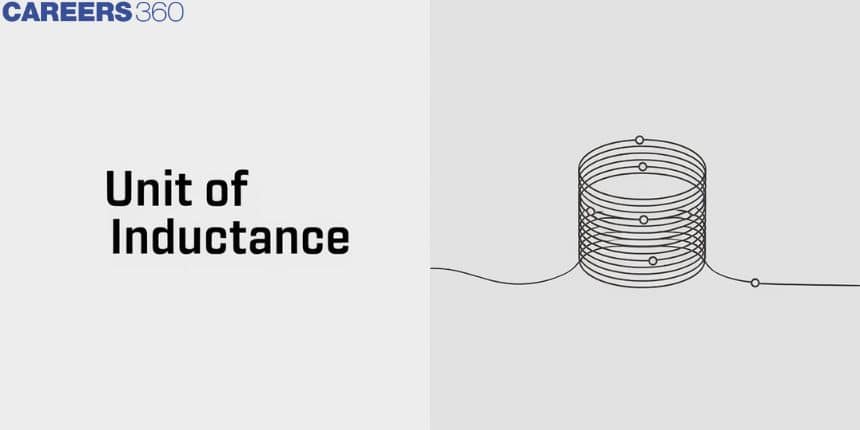Unit of Inductance - Definition, Types, FAQs
Introduction
In this chapter, we will study: What is Inductance?, SI unit of Inductance. We will also learn about types of inductance and see their application.

What is Inductance?
Inductance is an electrical term, tendency shown by the inductor to oppose any change in Electric Current flowing in it. It is denoted by (L). It is also called specific inductance.
SI unit of Inductance
Henry is the SI unit of Inductance. It is named after American scientist Joseph Henry.
Also read -
- NCERT Solutions for Class 11 Physics
- NCERT Solutions for Class 12 Physics
- NCERT Solutions for All Subjects
Definition of 1 Henry
To generate a voltage of 1 volt when current is changing 1 ampere per second, then inductance is 1 Henry.
V(t)=Ldi/dt
Where, L is inductance and current ⅆi/ⅆt is the rate of change of current.
Types of Inductance
Self-inductance:
It is a property of a current-carrying coil, which opposes any change in current flowing in it. The EMF produced in the coil resist increases in the current if there is an increase in current and the same is true for decrease also or
Expression for self inductance is given by
vL=- N ⅆφ/ⅆt-
Where, vL is equal to induced EMF
And ⅆφ/ⅆt- is equal to rate of change of magnetic flux
SI unit of self induction is Henry.
NOTE: The negative sign indicates that EMF produced is in the opposite direction or it is resisting.
Also Read:
- NCERT solutions for Class 12 Physics Chapter 8 Electromagnetic Waves
- NCERT Exemplar Class 12 Physics Solutions Chapter 8 Electromagnetic Waves
- NCERT notes Class 12 Physics Chapter 8 Electromagnetic Waves
Mutual Inductance
In mutual inductance, when two coils are brought close to each other with a magnetic field in one coil then EMF is induced in the second coil also, or
EMF induced is given by:

Where, ε12 is EMF produced by the first coil on 2 coils.
dΦ12/ⅆt is equal to the rate of change of magnetic flux in coil 2 by magnetic field generated by coil 1.
Also check-
- NCERT Exemplar Class 11th Physics Solutions
- NCERT Exemplar Class 12th Physics Solutions
- NCERT Exemplar Solutions for All Subjects
NCERT Physics Notes:
Frequently Asked Questions (FAQs)
Henry is the SI unit of inductance.
As we know, 1 Henry equal 1000 millihenry , so 1 millihenry equals 0.001 Henry
As we know, the Henry is the Unit of Inductance is Henry, so the correct option is (a).
F(Faraday) is not the unit of inductance while all other units represent the unit of inductance.
The unit of inductance is equivalent to Henries(H)
Iron-core inductor, laminated core inductors, powdered iron core inductors, air-core inductors are some of the types of inductors.
Yes, solenoids are inductors but not all inductors are solenoids.
Maxwell bridge measures inductance.